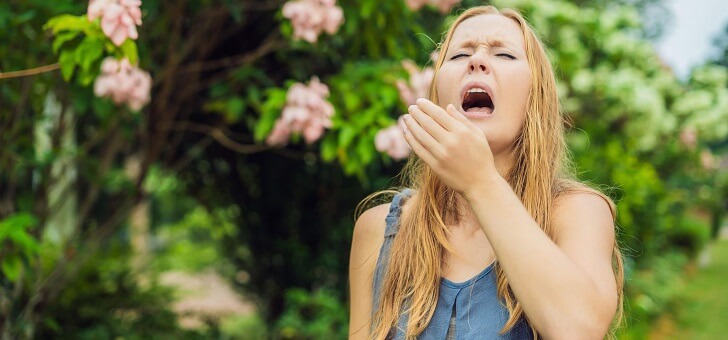About one in five Australians suffer from hayfever.
While some people experience symptoms now and again, for others they are persistent, severe and can disrupt sleep, concentration and daily life.
Common symptoms of hayfever include:
- an itchy, runny or blocked nose
- itchy or watery eyes
- frequent sneezing
- needing to breathe from the mouth
- always needing to clear your throat
- always feeling like you have a head cold
- snoring during sleep.
Read: Is it hayfever or just a cold?
What causes hayfever?
When your nose or eyes come into contact with microscopic allergens, your immune system identifies these airborne substances as harmful and produces antibodies against them.
Common allergens that may trigger hayfever symptoms include:
- grass, weeds and tree pollens
- dust mites and dust
- animal fur or skin flakes
- moulds and fungal spores
- air pollutants
- latex
- breads and cereals
- small animals.
“The body misrecognises them as being potentially harmful – like a bacteria or virus – and it tries to expel it from the body by producing mucus and the eyes tearing up,” says University of Melbourne pollen count team associate co-ordinator Professor Ed Newbigin.
In spring the allergens can be from the windborne pollen of plants such as some types of grass.
Hayfever season in Australia
“Hayfever is seasonal allergic rhinitis – in south-eastern Australia you get it as we come in to spring and early summer, so it will start around October or November,” Prof. Newbigin says.
In Western Australia, hayfever caused by pollen can begin in late July or early August.
In the Northern Territory, grass pollens are at their most potent levels from April, while in Queensland the peak hayfever season is from December to April.
How to reduce or manage hayfever symptoms
“If you do manage hayfever you are less likely to see it develop into asthma and sinusitis, which can happen,” Prof. Newbigin says.
“People think, ‘It’s just hayfever, toughen up’, but it can get worse, which is why it’s important to manage it as best as possible.”
Thankfully, the condition is easily controlled and there are lots of things you can do to manage it.
Read: Steps to minimise allergens in your home
Hayfever sufferers should have antihistamines on hand and should visit their GP if things get really bad but, in the meantime, here’s how to help ease any irritation, at least a little.
1. Monitor the daily pollen count and forecast
Pollen Forecast is great for tracking the pollen count in your area. You can see when high pollen days are coming up with the five-day forecast.
When pollen counts are higher, have your chosen treatment at hand.
2. Keep the windows closed
Sunshine and blue skies? It’s only natural to want to throw open the windows. Unfortunately, this can let in everything you’re trying to avoid, so try not to open them during peak pollen hours of late morning and late afternoon; and close them at night when there’s a high pollen count too.
3. Vaseline can help in various ways
A godsend when you have dry lips, eyelids or cracked skin, Vaseline can also help soothe and protect your nose. Try smearing it inside each nostril to ease any soreness and catch pollen entering the nasal passages.
4. Take a cool shower
If your eyes are streaming and you can’t stop sneezing, take refuge under the coolness of cold running water to help ease symptoms. You should also wash your hair and change your clothing if you’ve been spending any length of time sitting or working outside. If a shower isn’t practical, put a cold facecloth on your face and lie down for a few minutes.
A saltwater nasal spray or douche can also help flush out pollens.
Read: What to do and what to avoid if you have sinusitis
5. Used tea bags can help ease puffy eyes
Make the most of your morning brew by putting used tea bags in the fridge and use them as a cold compress to help relieve any swelling and soothe sore, itchy eyes. Cucumber slices can work too.
Rinsing your eyes regularly with cold water will also help to flush away pollen.
6. Keep your face mask on
Face masks have become so normal, you may as well use them to filter out particles of pollen too.
7. Avoid the wind
On windy days in spring, stay indoors as much as possible and avoid going out during or just after thunderstorms.
Do you suffer from hayfever? What do you do to ease symptoms? Share your advice in the comments section below.
– With PA
Health disclaimer: This article contains general information about health issues and is not advice. For health advice, consult your medical practitioner.
If you enjoy our content, don’t keep it to yourself. Share our free eNews with your friends and encourage them to sign up.

